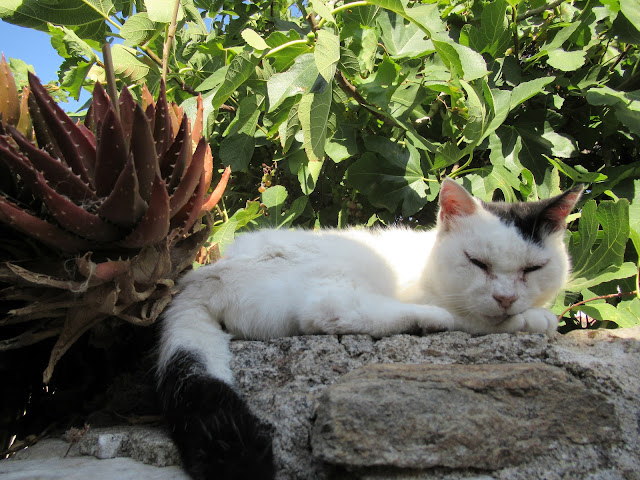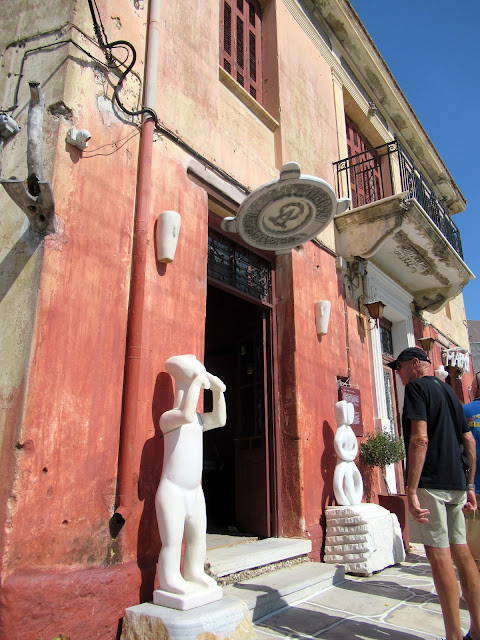The bus deposited us here, and we had less than 2 hours to explore this village.
The village of Halki (Chalki) used to be the capital of the island as well as its main administrative and trade centre. It's located in the valley of Tragea, the principal olive cultivation area of the Cyclades. It's speculated that Halki's name is derived from a family of bronze smiths who were settled in the region by the Venetians (chalkos in Greek means bronze).
Halki has a long history and the numerous neoclassical houses and buildings are testimony to the wealth and power the village once exerted in the surrounding area. Apart from the old mansions and the picturesque churches, the village itself has colourful alleys that give visitors the sense that they have somehow gone back in time. Many well preserved houses, Venetian towers and Byzantine churches can be found in the area.
Halki was the first village we visited on that day, so it was relatively early and lots of cafes and tavernas had not opened yet.
We walked down the main street which is the centre of the village in terms of cafes and tavernas
Even though it was early morning, the spit in one of the tavernas was turning
it leads to the main square, where most of social life is conducted.
The square is very cool as it's shadowed by a huge, majestic plane tree.
and some lovely gardens
and some sleepy inhabitants.
A wonderful, sheltered, cool sitting area in this house.
It is speculated that the church was constructed upon the remains of an ancient temple. The structure dates back to the 11th century.
Unfortunately, the church was closed when we visited. It was meant to open at 11:00 but by then we were on the bus on the way to the next village. It's a real shame as the interior is meant to be awe-inspiring, full of well-preserved frescoes.
not neo-classical maybe, but certainly cute

A little further down the road, the 17th century Barozzi Tower,
Our last stop was the Citron distillery housed in the Vallindra mansion.
We entered the enclosed courtyard of the mansion
It's quite interesting seeing what these grand houses look like on the inside
that sold, amongst other things, some studio ceramics

































































No comments:
Post a Comment